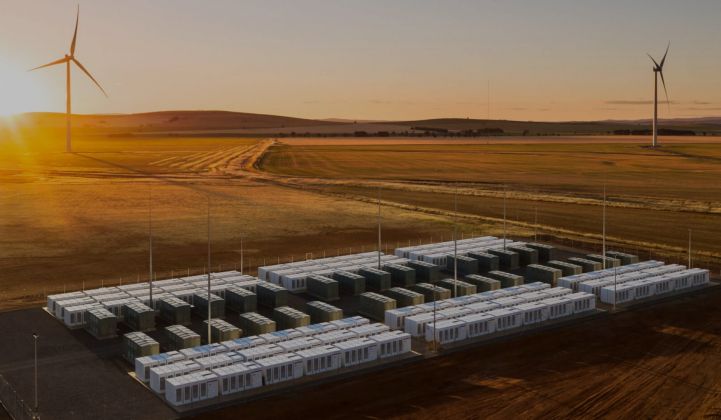NEW YORK — Big power plant developers are increasingly convinced they should be investing in battery projects in the United States. The challenge is finding investments that will pay off.
After years of promise, energy storage is finally on the cusp of blossoming into a multi-gigawatt annual market in the U.S. But the industry’s rapid takeoff means there may not be a “honeymoon period” for investors like there was in the earlier days of wind and solar, developers say.
From PacifiCorp to NV Energy, a growing number of major American utilities are drawing up aggressive plans to add storage capacity. Even in deregulated power markets like Texas, the falling cost of batteries is rapidly opening up new opportunities for storage.
Power plant developers including NextEra Energy Resources and Southern Power are moving quickly to take advantage of this new market, whose value is expected to surge tenfold from 2018 to 2023, rising to $5 billion annually, according to Wood Mackenzie.
Southern Power, the independent generation arm of utility Southern Company, has “shied away” from large-scale solar projects in recent years due to questionable returns, said Phillip Adams, development services manager.
But the company continues to spend half a billion dollars a year investing in new wind farms, and it owns more than 3 gigawatts of renewables capacity. Last summer, Southern Power formed a partnership with battery developer esVolta that could see it investing in four California storage projects totaling up to 86 megawatts/345 megawatt-hours.
“What I’m really excited about right now is energy storage,” said Adams, speaking onstage last week at S&P’s Power and Gas M&A Symposium in New York.
“For the last two or three years, we keep hearing that that market is about to explode. I feel very confident that from this year going forward, the market is actually going to grow significantly,” Adams said.
The search for revenue certainty
The U.S. storage market will crack 5 gigawatts per year in 2023, WoodMac forecasts, up from around 400 megawatts last year. But a surging market doesn’t automatically translate into an easy investment landscape.
The first wave of U.S. energy storage deployments was driven by state mandates like California’s or shorter-duration grid service opportunities, notably Mid-Atlantic grid operator PJM’s frequency regulation market.
Today’s storage systems, by contrast, are taking on a far larger set of tasks, from firming utility-scale renewables to plugging capacity and resource adequacy holes in regions where older power plants are retiring. In this new world, long-term contracts with predictable revenue streams — such as the power-purchase agreements so prized by renewables developers — are often elusive.
“There are a lot of different ways you can use a battery; there are a lot of different ways you can make money from it,” Adams said. “We’ve not necessarily figured out yet how to contract around each one of those to lock in that [revenue] certainty.”
In California, the storage market is seeing “some pretty basic capacity contracts,” which are attractive for risk-averse companies like Southern Power. “But if you look in the Northeast, you start looking at projects where 50+ percent is not covered or it has some sort of merchant revenue piece to it,” Adams said.
“Even sometimes [within] specific geographies, the contracts can be vastly different.”
Storage market "going straight to the riskier phase"
Another problem for would-be storage investors: There's plenty of company.
There are so many interested parties that “want to invest right now in renewables, and there’s not enough of a supply of renewables to really satisfy that need,” Adams said. “A lot of [those who] want to invest in renewables [are] now going to throw their money at storage.”
For the grid as a whole, that pool of capital chasing storage is a good thing. For investors, it’s a different story.
The storage market seems to be “skipping the honeymoon period,” said Himanshu Saxena, CEO of the Starwood Energy Group, a private-equity investor in a range of generation and transmission assets.
“Generally there is a honeymoon [period with] these technologies where people would give you 15- or 20-year contracts before they start taking the certainty away from you — there’s a window in which you can extract some good, contracted, safe deals with decent returns.”
“Storage seems to be skipping that middle phase and going straight to the riskier phase,” Saxena told attendees at the New York conference.
Even in California, many deals require developers to add elements of merchant risk to pencil out economically, Saxena said. “We’re seeing deals in Texas where folks are showing us storage projects that are completely merchant.”
Potential for "battery burnout"
Starwood has seen firsthand the positives and negatives of storage assets. In 2016, it provided finance to industry pioneer Stem, which recently confirmed to GTM that it’s looking for potential buyers. Starwood owns stakes in around 50 small battery systems today, Saxena said.
Saxena warned of another risk that may not be fully reflected in storage contracts: battery burnout.
As time goes on, many battery system operators “have figured out they’re not being dispatched the way they thought they were going to be dispatched,” he said. “This is very much trying the new machine and seeing where the best value is. And these [assets] are being cycled far more than what people expected.”
One way for storage developers to lock in a degree of revenue certainty is by granting dispatch rights to a utility, which can then call on the batteries when needed. But that revenue certainty comes at a cost.
“If you give the utility unlimited rights to dispatch your system whenever they want to, you will effectively burn [out] your battery faster than you thought you would,” Saxena said.
Operations and maintenance costs for some projects, he said, “are going to be far more than people forecast when they got into this business.”




